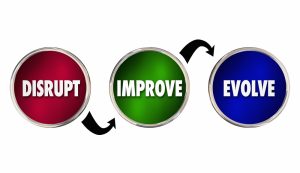
Higher ed marketing borrows from traditional B2C marketing models that have otherwise gone through a lot of disruption in recent times. However, much of higher ed marketing practices are still reflections of models and frameworks of the 1990’s. This is true because in higher ed institutions, “marketing” isn’t considered to be the critical success factor. This perception ensures that there are no attempts from higher ed marketing practitioners to define new grounds for themselves, that may lead to new success in their work.
While most of the “marketing” work they end up doing is focussed on “user acquisition”, higher ed marketing folks are dependent on tools and interventions available from service providers in the same domain. The fact that they are more valuable as they move on to the next institution/organization in short time, means that the value they create for their current institution through their body of work is minimal.
So, can we “outsource” the entire function of higher ed marketing from our Universities? Probably – Yes, in its current form and scope.
I don’t subscribe to an outsourced higher ed marketing team, as it is through these teams that Universities can grow and maintain their demand amongst aspirants throughout multiple geographies and then identify some of the best talent to recruit for their programs. The job of higher ed marketing folks therefore needs to be disrupted and redefined.
Their work cannot be defined by the limited scope of “marketing”, but rather a larger scope of “recruiting”. They are not supposed to “spend money”, bur rather they are to “invest” into creating sustainable demand.
Every marketing student is conditioned through “product life cycle” designs and larger consumer life-time worth, which mean nothing in higher education. University teams should embrace the frameworks that work for their specific domain and are a part of their DNA.
For example, rather than ‘product life cycle’ based designs which consider timelines based on the product/course, University teams can start the design process by following the ‘applicants life cycle”. Since they are in the business of “recruiting”, higher ed marketing teams need to design everything around the applicants life cycle to build demand and acquire good talent.
Applicants life cycle includes 4 phases – Research, Prep, Applications, Admit. Imagine your every strategic call is based on each of these 4 phases, and every marketing communication focussing on engagement with each kid throughout each of the 4 phases. That is one strong demand generation plan.
So when you plan next year for your territory, begin your plan via understanding “how do aspirants “research” in this territory?”. Find out the different channels and the time spent on each of them by these aspirants. Run this data through some statistical forecasting tools and allocate your time, money, and communications/content in these channels accordingly. Next, figure out how you can be a part of the “prep” phase for these candidates by getting data from prep institutions and courses, and getting your communications and deliverable relevant to prep requirements. Imagine your country reps and other activities at this time focussing primarily on ensuring engagement with your brand and prep cycle.
The first two phases are critical since they create the maximum engagement possibility between higher ed marketing teams and candidates. If candidates haven’t “discovered” your brand properly throughout their research and prep phases, the chances of applications now will be highly dependent on your ‘elevator pitches’ during events/tours and also general perception about your institution amongst their friends/associates, both of which you cannot control or depend upon.
So, to ensure that higher ed marketing teams build upon the applicants life cycle, I propose the 4 concentric phases to compliment the HEM side:
Discovery -> Networking -> Conversations -> Conversions
Fit these 4 phases into those of the applicants life cycle, and one would have the most well defined work cut out for the higher ed marketing team. Focussing on each of these stages and working on them separately (with commitment in terms of time, money, efforts, and manpower) will generate awesome “demand”, leading to creation of user-communities for the University and then to good conversions for the programs.
Almost every higher ed marketing team today are trained/conditioned in the last two phases – conversations and conversions. The problem is that without the first two phases, these two aren’t going to be awesome. However, higher marketing practitioners are really bad at designing or even visualizing what needs to be done for the first two phases. The kind of skillsets requried for the first two phases would include items like – content marketing, engagement mapping, micro community building, community management, etc. Look into your University’s marketing teams and tell me how many of your team mates really have these skill sets.
The time is “now” to disrupt the traditional higher ed marketing job/work and be ready for getting the best out of your “recruiting” strategies. User acquisition in higher ed isn’t a simple process, as it exhibits properties of B2B deals. Also, candidates in higher ed exhibit community behavior right from the start and therefore your designs cannot be superficial. Either get your teams re-skilled or replace existing talent with people who have the required skill sets to disrupt your University’s higher ed marketing.
It is better to disrupt than be irrelevant



